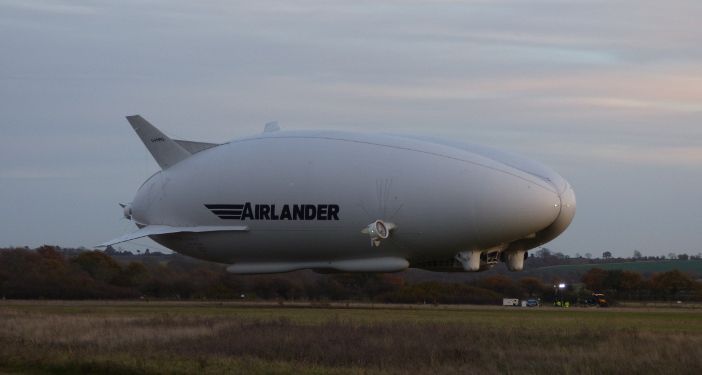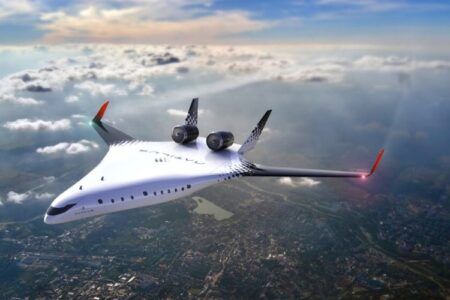Hybrid Air Vehicles has applied for a Type Certificate with the UK Civil Aviation Authority for the Airlander 10, kicking off a process that could see the large airship-like vehicle flying commercially in 2028.
The 302 x 143ft (92 x 43.5m) Airlander 10 can carry up to 100 passengers and 10 tonnes of payload. The helium-filled hull makes the hybrid aircraft part lighter-than-air blimp and part airplane.
The Airlander 10 will have a range of 4,600 miles (7,400km), a top speed of around 80mph (130km/h), and will be able to stay airborne for up to five days.
The Type Certification process begins with the CAA and Hybrid Air Vehicles (HAV) agreeing on a plan that will show how Airlander 10 will meet the requirements set out in the basis for certification, a step known as the means of compliance. This involves writing extensive documentation and conducting a range of planned tests, including analysis, simulation, laboratory, ground and flight tests.
Airlander 10’s first flight is planned for 2026 and its entry into service 2028. It is the first large aircraft the UK’s Civil Aviation Authority (CAA) has certified since 1979. HAV is also working with the FAA in the USA and EASA in the EU to certify the aircraft.
Tom Grundy, CEO of Hybrid Air Vehicles said, “Airlander makes new, sustainable aviation services possible at scale – it’s a large aircraft designed to deliver services from large global fleets. Alongside our production program, applying for Type Certification is a key milestone in our journey towards this goal.
Mike Durham, chief technical officer of Hybrid Air Vehicles and head of the design office said, “As a Design Approved Organisation, we have an established relationship with the CAA and have implemented processes to achieve the safety-first standards that today’s aviation industry demands.
“We have also worked with regulators to establish a certification basis, which includes the safety criteria this type of aircraft needs to meet. Formally beginning the Type Certification process is a proud moment for myself and the entire Design Office.”
Hybrid Air Vehicles is aiming for Airlander 10 to be used in civil aviation applications in mobility, logistics, and tourism and leisure roles.
The company plans to make up to 24 aircraft a year from a new factory which will be sited in South Yorkshire, UK, where it plans to employ up to a 1,200 people.
Initial reservations for Airlander 10 include 20 aircraft for regional airline and launch customer Air Nostrum, and French polar tourism company Grands Espaces, which reserved an Airlander 10 aircraft for unique and sustainable exploration experiences.
The first Airlander 10s will be fueled by Jet A and according to HAV will reduce emissions by 75% compared to equivalent regional aircraft. The company plans to achieve a 90% emissions reduction by switching Airlander 10s to hydrogen fuel cell propulsion in the future.
HAV is also developing the Airlander 50, a larger version of the hybrid airship suitable for freight applications as well as passenger ones. The company also has a partnership with BAE Systems and is working with the US Navy to explore defense applications for Airlander. The design was originally developed for the US military as a persistent communications and spying platform in 2009.





